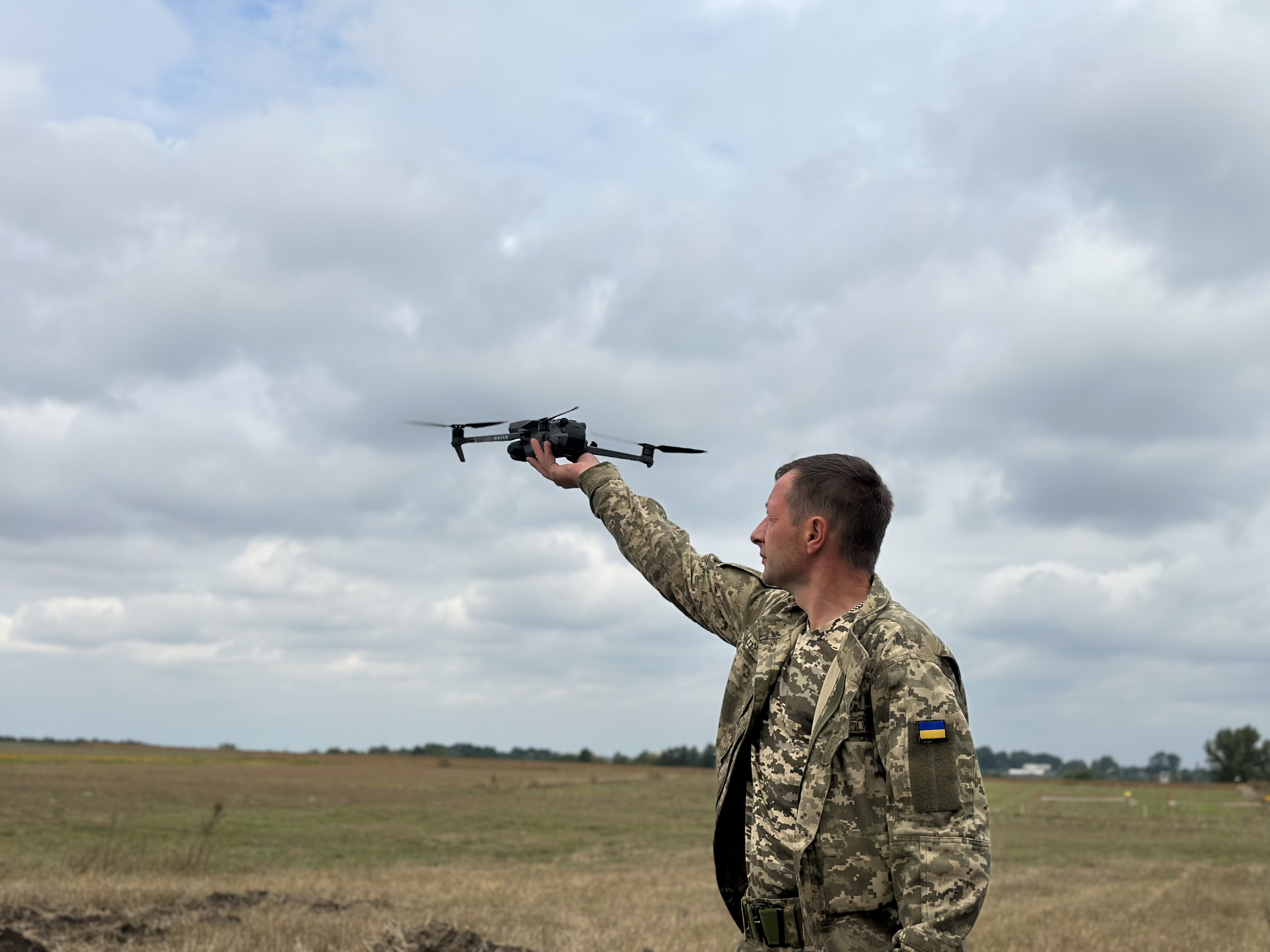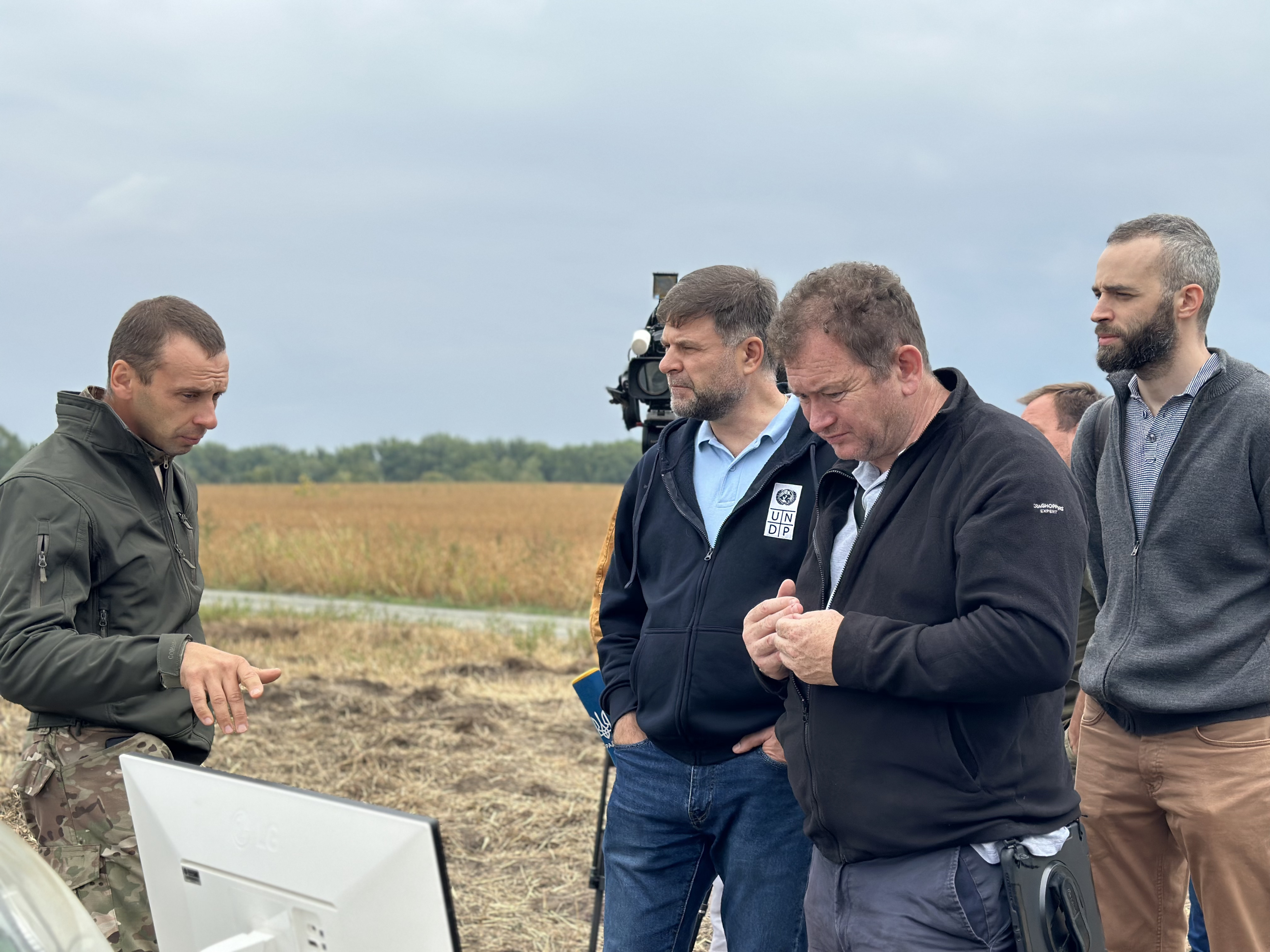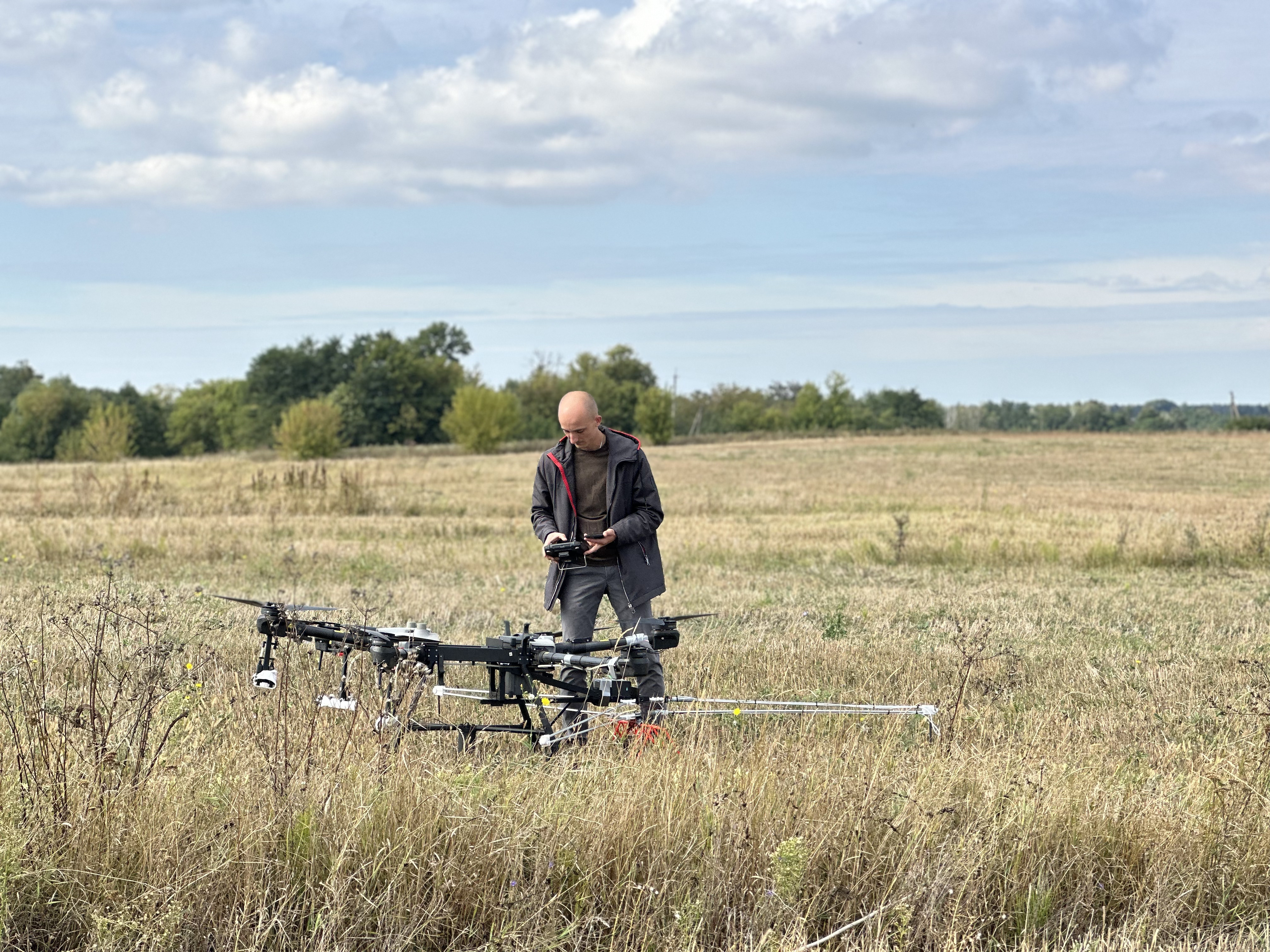Innovative technologies could rid Ukraine of landmines in 10 years
October 11, 2023

A Ukrainian developer prepares to present his technology in humanitarian mine action, Zhytomyr Oblast
Originally published in The New Voice of Ukraine on Oct 11, 2023
The landmines now contaminating Ukrainian agricultural lands harm both people's safety and the economy. Farmers cannot use their fields until deminers clear the area. Clearance is usually done using conventional methods – deminers search for mines while traversing fields with special equipment.
Recently, I visited Zhytomyr Oblast along with Ukraine's Minister of Economy, Yuliia Svyrydenko; the CEO of the Kyiv School of Economics, Mykhailo Shneyder; U.S. investor Howard Buffet; and our partners from the State Emergency Service of Ukraine (SESU). The purpose of our visit was to explore Ukrainian technologies that have the potential to revolutionize this sector. It was truly inspiring to witness how rapidly local technologies are being developed to support humanitarian mine action. UNDP is committed to bringing together the best of both international and national innovation.


Presentations of innovative demining technologies during a visit to Zhytomyr Oblast / Photo: UNDP in Ukraine
In June, UNDP in Ukraine, the Ministry of Economy, and the Kyiv School of Economics started testing a range of robotic technologies for demining. During the first phase, we trialled seven UAV/sensor technologies. The trial was supported by UNDP and generous funding from the Government of Denmark.
Two technologies were consistently able to detect surface-laid mines and unexploded ordnance, while another one was consistently able to detect sub-surface (buried) mines and unexploded ordnance. The Ministry of Economy provided a test site covered in mines and unexploded ordnance where the trials could be conducted safely.
Innovative technologies in action

Infographics: Example Phase I trial data showing surface and sub-surface mines and unexploded ordnance detected within the Chernihiv trial area.
One of the companies participating in the trials detects explosive objects by analysing magnetic anomalies created by unexploded ordnance and mines encased in metal, located both underground and on the surface.
A magnetometer is suspended under a drone, which flies over the minefield on a specified trajectory. During the flight, the device records the parameters of the magnetic field, matched to precise coordinates. After landing, the information that has been collected is processed using specialized software, creating a map of magnetic anomalies, with bright points indicating the location of mines or unexploded ordnance.

Infographics: Example Phase I trial data showing surface mines and unexploded ordnance identified using artificial intelligence (AI) within the Chernihiv trial area
Another technology allows the detection of mines and ordnance using artificial intelligence.
By analyzing images taken by UAVs, the system can pinpoint the locations of explosive objects autonomously and describe the type of object located on the terrain.
Improving such technologies can address two important challenges: first, determining whether mines are present on the territory so demining operations can begin; and second, confirming the absence of mines so the land can be used. Both tasks are crucial outcomes.
The technologies require improvement and further testing in various weather conditions, on different soil types, and in varying degrees of vegetation density.
If no mines are detected, the fields can swiftly be returned to farmers. If mines are present, they will be handled by the SESU or other organizations. If these tools are effective, UNDP and partners would like to scale them up for use all over the country.
A comprehensive and innovative approach
What's next? We will continue testing these three technologies, which have already shown good results. A further more extensive trial for the shortlisted technologies is planned for October–November 2023, run for the Ministry of Economy with the support of UNDP. First and foremost, these technologies will be offered to the SESU for use, but other demining operators could also use them.
The approach to demining must be comprehensive and innovative. The level of contamination with mines and unexploded ordnance in Ukraine is very high, with some areas of the country likely among the most contaminated parts of the planet at this moment in time.
The problem of mine contamination is also a global economic issue, affecting food security. Lower production in Ukraine could lead to ever-higher food prices, which would hit countries that import food hard. To help reduce global food insecurity, we need to remove mines from Ukrainian land to allow it to be farmed again.
This will require a new mindset, and focusing on impacts and positive outcomes from the use of such technology. There are many ways new technology can help: working with the SESU using powerful computers, A.I. and satellite imagery, we can evaluate around 800 square kilometres of territory for farmers a week, giving them the confidence to use land previously thought to be unsafe.
Clearing Ukraine’s territories of mines currently costs $300 million annually. With our project, using a high impact, low-cost technological solution that costs just a few thousand dollars, we could save millions of dollars. There is no silver bullet in mine action, but if we think outside of the box, Ukraine can remove much of the economic impact from perceived explosive contamination within the next 10 years.

 Locations
Locations